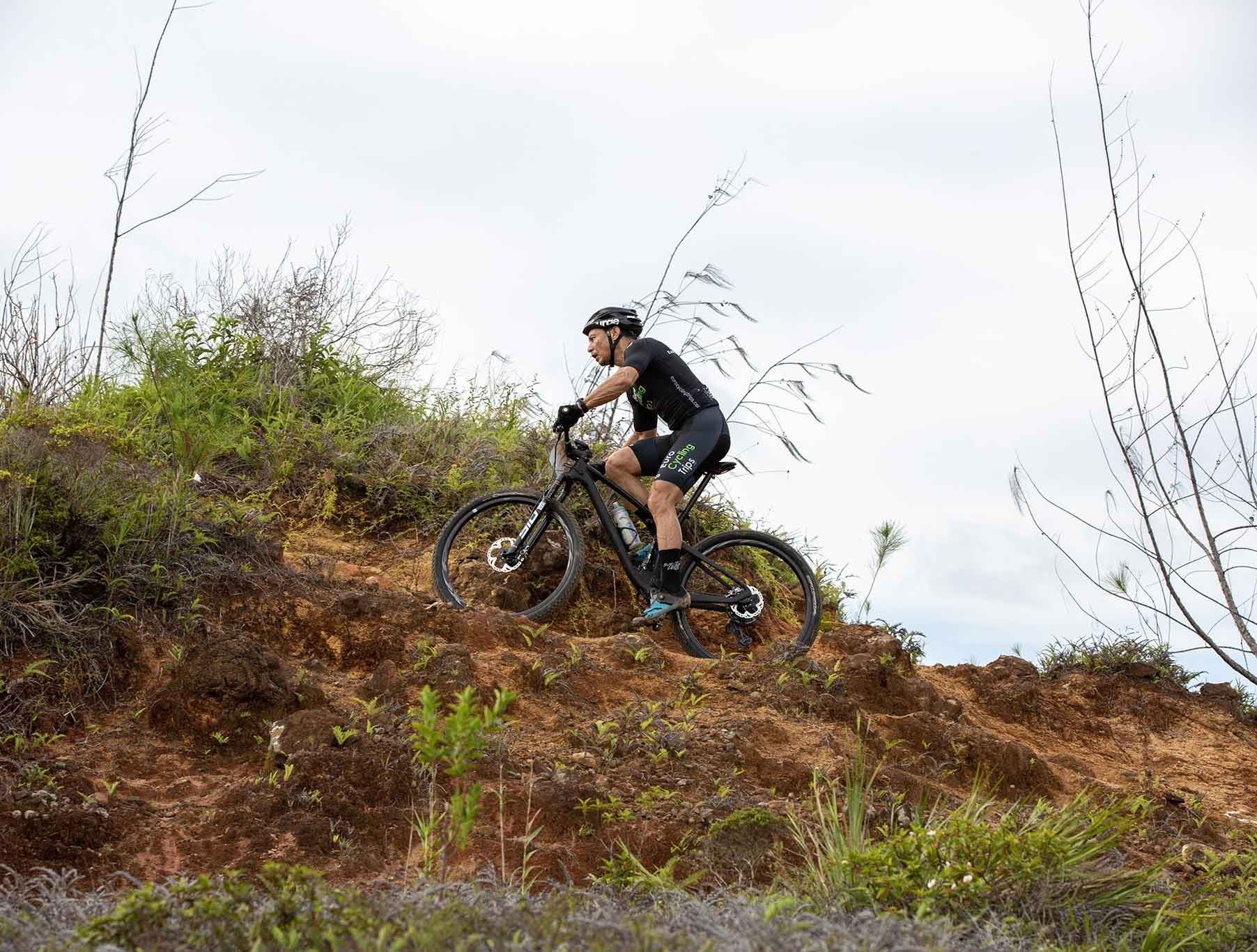
Do you know the basic knowledge of bicycle brakes? 1. The brake is used to control speed, not just for parking. 2. The front brake has a better braking effect. 3. The brake has the maximum braking effect when it is locked, and the braking performance is greatly reduced after locking and it is easy to lose balance. Many novices prefer to use the rear brake and use the front brake less because they are worried that using the front brake will cause somersaults. In fact, the front brake is safer in many situations, and learning to use the front brake can also be learned quickly. Why do we mainly use front brakes? 1. The front brake will have a better braking effect. The control speed is mainly dependent on the friction between the wheels and the road. The friction is directly proportional to the pressure applied by the wheels to the road. When using the front brake, due to the inertia, the pressure on the front wheels and the road will increase and the braking effect will increase. The rear brake has no such effect, and when the front brake is used, the pressure of the rear wheel on the road surface is greatly reduced, and the friction becomes very small. 2. When going downhill, only the front brake can have sufficient braking force, because most of the weight of the bike and the human body is on the front wheels and the friction between the front wheels and the road surface increases. The rear wheel has very little pressure on the road, and the friction is reduced. The braking effect is very poor, and the rear wheel will lock and skid with a small braking force. How much have you mastered using the braking practice? 1. The brake lever of a general mountain bike is a two-finger brake lever. When riding, put your index and middle fingers on it, and you can brake immediately if there is an emergency. Many riders also set aside their index finger to shift gears, and only use the middle finger to control the brakes, so that shifting and braking can be performed at the same time. 2. The first thing we learn is the control of braking force. Gradually become familiar with how much braking force can be achieved by applying how much force to control the braking effect and prevent locking. After you are familiar with the relationship between braking force and braking effect, you can use the front brake with confidence. 3. You can master the front braking technique by practicing fast parking, paying attention to the change of the body’s center of gravity and controlling it when braking. What should be paid attention to when using the front brake? 1. In an emergency stop, your body should move backward and downward in conjunction with the brake, so as to prevent the forward inertia of the center of gravity during braking, which may cause the rear wheel to lift or even fly out. 2. When the front wheels are turning, you should not use the front brakes. After you are skilled, you can use the front brakes slightly. 3. When there are obstacles ahead, try to avoid using the front brake.
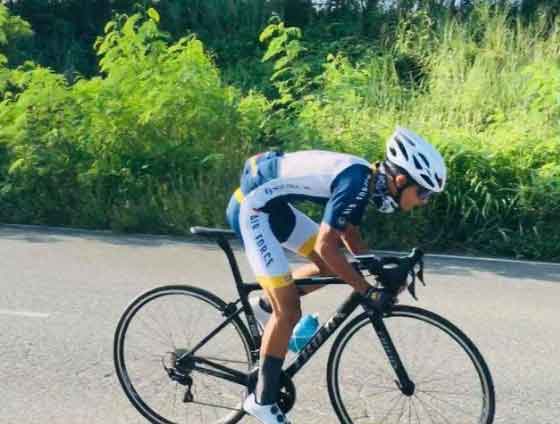
I have just been in contact with road bikes for a few months, and I have come out of my ignorance and practice of rocking bicycles. The first point of rocking a bicycle must be understood and not wrong. “My biggest mistake is to step on the left side when rocking the bicycle, and the whole body will go to the left”, so if you don’t understand or don’t understand, you must not rock the bicycle wrongly. Fortunately, I met a famous teacher to help me correct it, otherwise, it will appear sooner or later. Danger. Now let’s talk about how to rock a bicycle and how to rock a road bike! 1. Lock pedals, lock shoes, and lock: Whether you are an experienced person or a novice, the most heard sentence is, don’t play a road bike unless it is locked. I will give two examples of reasons: 1): The front wheel of a road bike is close to the chainring. If it is not locked, if your foot is slightly longer or in the middle and back position when turning, it is easy to rub the front wheel and fall. Of course, this chance is very small, but it’s not impossible, I hope everyone will pay attention) 2): When cycling for a long time or climbing hills and cycling on bumpy roads, if you do not lock your shoes, it is easy to slip. Example: I was waiting for the traffic light when I didn’t lock my shoes, and accidentally slipped my left foot and hit my leg. It was all blue and it hurt.) Therefore, the necessary conditions for the road bike to shake bicycle must be locked. The above is a summary of my personal experience and must be locked. Of course, many experienced people will say “muscle correction” and other high-level words, which are very reasonable. I just give you an easy-to-understand suggestion. 2. What’s the role of the rocking bicycle: The premise is that if you don’t know the role of the rocking bicycle, then you have to look here. Remember, don’t ignorantly think that rocking a bicycle is a cool thing, “I thought so too.” Someone with experience told me some time ago that the role of non-professional bicycle hand-cranked bike is just that. 1): After cycling for a long time, buttocks burp panic. If you shake the bicycle for a while, it will help the blood circulation in the crotch. The most important thing is that the experienced cyclists said “can effectively avoid prostatitis”, indicating that he did not understand, but he still feels good and bad) 2): Rocking the bicycle uphill is the most common. I have also tried to sit uphill, but in terms of confidence and strength, it is more comfortable to rock the bicycle uphill in the end. I don’t understand why, how comfortable it is anyway Come on) 3): The most common attack in the Tour de France is to sprint the bicycle. This is against the sky. I haven’t learned it yet. I heard it is quite dangerous. And as a recreational rider, learn if you have the opportunity, there is no need to make yourself like a professional rider) 3. Practical technology of rocking bicycle: According to my own experience and the guidance of experienced cyclists, I have also summed up such a few tips on rocking. In fact, it is similar to many rocking experiences. I think no matter how difficult the technique is, as long as you pierce this layer of window paper, there is no secret at all. The main thing is that if someone can take you, you have the confidence to complete it. 1): Bow forward, step on the right foot, and rock the body to the left, vice versa, move the body vertically up and down “Don’t lean”, use the most familiar words “the bicycle shakes the person without shaking”. ) Note: It’s impossible to succeed in one shot. Try it slowly and shake it out. I feel that it is really difficult to learn. 4. the gear ratio of the rocking bicycle: Sometimes the rocking bicycle feels weak or empty, and it is easy to understand that “no feeling at all, no power on the feet”. If you understand, try changing the gear ratio. Tip: Be sure to position your gear ratio according to your foot strength. (On flat roads, use slightly heavier gears according to your own foot strength. It is easy to understand that “the front gear depends on your physical strength, and the rear gear changes from large to small, whichever feels heavier.”) (When going uphill, the gears are changed from small or medium to big gear in turn. If you change to big gear, you can rock the bicycle. This depends on my own habit, I have no choice but to “I can’t step on it.” When I don’t know how to rock the bicycle, the uphill road bike is not a grade problem than the mountain bike. If you understand it, like it, the codeword is hard) 5. Cautions for rocking: It is recommended that you rock the bicycle when driving straight on a flat road and when you go uphill. In heartbreaking situations such as curves, downhills, crowds, complex terrain, potholes, etc. Ride slowly and honestly. Remember: rocking a bicycle is a means and cannot be used blindly.

Now cycling has gradually become a healthy lifestyle. Not only do men love cycling, but more and more female friends are doing the same. Now let’s talk about the benefits of female cycling! 1. Lose weight and lose weight, comparable to open hang Cycling is also aerobic exercise, and it has a rare advantage over jogging and brisk walking, which are highly regarded as the king of fat-reducing exercises: aerobic cycling lasts for more than 30 minutes, and then it starts to achieve effective combustion. The effect of fat, and the consumption of fat is systemic. It is not because of cycling the leg muscles that you can only use the leg muscles. Long-distance aerobic exercise more than 3 times a week, plus the right diet, can achieve The effect of weight loss! 2. Get used to cycling, self-cultivation, and shaping Long-term and regular cycling will bring you a strong muscle curve, slender and sexy ankles, tight arms, abdomen, back, etc., which is far more enduring than a diet party with a haggard face and bulging veins. 3. Improve physical fitness and stay away from illness Is it because the weather changes abnormally to catch a cold, or if someone catches a cold and you catch a cold, the thick nasal sounds that often appear make others mistakenly think you have rhinitis! Hurry up and join the cycling army. If you ride a bicycle on a regular basis, you will find that not only your physique has improved, but your minor illnesses will no longer harass you, and your stiff and painful old waist seems to relax. Not only that, the habitual cycling exercise can expand your heart, otherwise, the blood vessels will become thinner and the heart will degenerate more and more. In old age, you will experience the troubles it brings, and according to North Carolina According to a university study, if you ride a bicycle for 30 minutes a day for 5 days a week, you can reduce sick leave by half compared to those who lie at home and watch TV every day. See if you have begun to appreciate yourself, how wise it is to choose cycling. 4. The secret to youthfulness and age reduction Cycling exercise accelerates the circulation in the body, which can more effectively deliver oxygen and nutrients to the skin cells while eliminating toxins. And cycling exercise can also create an ideal environment in the body to optimize the production of collagen, thereby slowing down the production of wrinkles and accelerating the speed of repair. Of course, you must apply sunscreen before going out to exercise, and apply it appropriately according to the outdoor time. In addition to the rejuvenation of the face and skin, cycling will also bring about the youthfulness of the body. Do you often feel forgetful? The symptoms of memory loss at the beginning of aging are becoming more and more obvious. In fact, there is no difference between you and your youth by bicycle. 5. Broad vision, long sleeves good dance Be a goddess at home? Those who would rather ride as a female man, cycling on the road, will meet different people who love cyclists, see the beautiful scenery that has not been seen before, join the cycling club, the social circle will gradually expand invisibly, not only that, A single girl may find a partner. 6. Confident and cheerful, meet a better self cycling is a wonderful start. Perhaps it was to get rid of the annoying fat at the beginning, to improve the physique, and to have two more friends, but found that not only the physique is getting better and better, but the body shape is getting better and better. I never expected it. You can go cycling with your friends, self-confidence is also accumulated in the cycling, and even feel that under the negative pressure of life and work when you are about to exhaust your talents, you can save yourself by cycling. Let us get better and better!
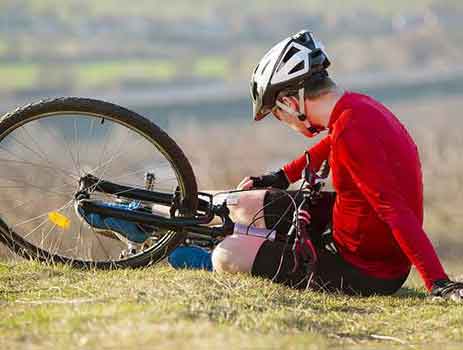
When cycling a bicycle, many cyclists have experienced crashes. Now combined with some escape experience, I would like to refer to cyclists for reference. 1. Psychological preparation: Any sport has its dangers, and two-wheelers are no exception. Cycling is also a two-wheeled sport, which is characterized by a certain speed or the cyclist’s own center of gravity adjustment technology to master the balance, in order to obtain a stable movement posture, and finally, drive to the destination. However, during exercise, if this balance is broken, the cyclist cannot adjust it back in time, and the phenomenon of losing balance will inevitably occur. . . An accident appeared here. Therefore, since it is a sports event, there must be accidents during training and competition. Although protective gear can be used for protection, the degree of protection is still relatively limited. What really plays a decisive role is the driver’s quick response and self-protection actions. So as long as they participate in cycling, cyclists must always be mentally prepared to deal with accidents. Only by facing the accident correctly and keeping a clear and calm mind at the moment of the accident can we make timely and reasonable emergency measures. Protect yourself and reduce injuries caused by sports accidents. 2. Abandon the bicycle: Loss of balance will inevitably face an abnormal landing. If it is determined that the situation can no longer be restored at this time, an escape action will begin. The first element of escape is to quickly abandon the bicycle. The advantage of the separation of people and bicycles is that people can face the embrace of the earth alone, instead of falling into a rolling bicycle. If the speed of abandoning the bicycle is not fast enough, the body posture will change because a certain part of the bicycle is bound to the body, which will have a great impact on the self-protection action after landing. The method of abandoning the bicycle is to throw the bike body to both sides. You must use both hands to throw the bicycle to the left or right, not your feet. If the legs are also involved in the action, it will also bring negative effects, causing the spatial posture of one’s body to change, and the body is slanted to the ground. Even if you have to move your legs, you can just retract your legs over the body of the bicycle to prevent the bicycle from tripping over you. Also remember to throw the bicycle to the sides, not front and back. 3. Landing: The body must be relaxed before landing so that the muscles and joints are not tense, the flexibility is high, and the cushioning is good. The first point: “support”. Support refers to the movement of the limbs (hands and feet) in order to well cushion the impact on the ground, temporarily maintain the body posture, and make adequate preparations for the full-scale landing of the body. Or there are other objects at the drop point, such as big rocks, branches, other riders, etc. . In order to avoid these things, it is very necessary to do a supporting action at this time. The support must be “soft support”, that is, the limb joints (elbow joint, knee joint, wrist, ankle) are properly bent, at a certain angle, and bent close to the body, so as to effectively cushion the impact. If the limbs are straightened, a “hard-to-hard” situation will be formed. Such a wrong support method will directly cause limb dislocations, fractures, and other injuries! Therefore, “unreasonable support action is better than no support”, this sentence is very popular in sports, and it is also a very reasonable theory of self-protection technology. The second point: the torso landed. In any case, be sure to avoid landing on the ground directly. The consequences of frontal landing are very serious. The face and limbs are all directly damaged parts, and the damage is the greatest. Therefore, before landing, change the body posture by turning, letting the shoulder and back land, and then adding the homeopathic rolling action, this is an effective landing cushioning action. The correct position of the shoulder landing is the position of the side and back of the shoulder joint close to the back. If it is the front or front side of the shoulder, the clavicle will be broken due to poor bearing capacity, and the shoulder joint will be easily dislocated. Landing on the back is a good way to land because the back muscles are thicker, and the natural arch can effectively resist impact and protect internal organs. When you land on your back, be sure to bend your neck forward to protect the back of your head. The key is to think “eyes look at your belly” when you touch the ground, so as not to let the back of your head hit the ground. The third point: rollover. Rolling can reasonably eliminate the inertial momentum of the body forward after landing. At this time, you should relax your body, put your arms in front of your chest to protect your chest, and your legs will bend together naturally. The head should still be bent forward to avoid further injury during the roll. The roll direction is also best to be lateral, the vision will not be greatly affected, and the head is also well protected. If it starts straight ahead or straight behind, change the direction as soon as possible to roll sideways. Get up and flee the scene as soon as possible after the rollover, to avoid hitting you by the vehicles behind you. (The situation will be different depending on the competition event).
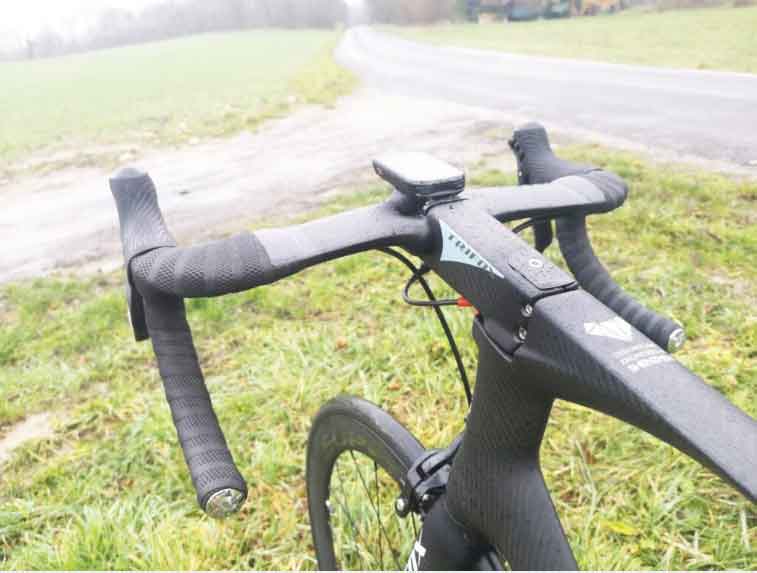
For most road bikers, comfort is definitely a part of efficiency, as specialized said, “Smooth is faster” unless you are a “copper wall and iron fart”, or your cycling route is very smooth. Some cyclists may feel that the comfort of the bicycle is not up to expectations, so they will choose to replace the endurance frame or the ultra-light climbing frame. This is of course a way to solve the problem from the root, In fact, there are some methods that do not need to be so troublesome or even cost a penny to improve comfort. Tires are the first level of shock absorption. In fact, most of the shock absorption of road bikes is done by tires. Suitable tire settings can be used more than endurance frames, so we start with tires. Tire pressure First of all, of course, the free method of improving comfort is to lower the tire pressure. So far, many cyclists are still superstitious that this high tire pressure is faster, so many feel that the bike is too bumpy, in fact, because the tire pressure is too high. In this era of 25c, even 28c wide tires and wide rims, the tire pressure of 120PSI has long been unnecessary. As long as you are not a 200 kg rider, the tire pressure of about 100 PSI is completely sufficient, and 28c tires can even be reduced to 80 PSI. Therefore, if you feel that the bike is too bumpy, you must first check your tire pressure setting. A reduction of 5-10PSI is enough to change the cycling experience. In the era of disc brake road bikes, most frames were designed based on 28c tires, and many frames support measured 30mm or even 32mm tires. The 28c tire will be higher than the 25c after inflation, and the “buffer cushion” is also larger, so it can effectively improve the road feel. But wide tires are a double-edged sword. While improving the road feel, due to the increase in the weight of the tire and inner tube, and the weight gain is concentrated on the outer edge of the wheelset, it will increase the feeling of heavy drag and reduce the efficiency. Especially obvious. Obviously, this is just a comfort-oriented improvement plan. If you want to have both speed and comfort, you have to think of a way. Since we have to sacrifice a little weight, we do not adopt this plan. Tubeless tyre If you don’t want to use 28c wide tires, you can choose to use tubeless tires. Currently, most disc brake wheels support tubeless tires. Since the tubeless tire has no friction between the inner tube and the outer tire, the rolling resistance will be lower than that of the open tire; and the risk of snake bite is eliminated, and lower tire pressure can be used. In actual experience, in the case of 80PSI tubeless tires, the rolling resistance is almost the same as that of 100PSI clinchers, and the road feel will be significantly improved. So you definitely want to ask, is the 28c tubeless tire feeling invincible? This is indeed the case, and without the weight of the inner tube, it will be lighter than the 28c clincher, and the efficiency will be higher. Of course, the tubeless tyre is not perfect, and it is quite troublesome to use. For example, disassembly and assembly, emergency treatment of a puncture, and dry self-refilling make it a little more troublesome to use it. But compared to tube tires, I would still choose tubeless tires. So is there any other way? some! Wide wheelset There is no metaphysics in this, it is just that the rim of nearly 21mm inner width increases the actual installation width of the tire. The actual installation width of the 25c Continental wheels has already been 29mm, so what you enjoy is the comfort improvement brought by the wide tires, not the wheels themselves. This benefit is also very obvious, that is, with the weight of 25c tires, you can enjoy the road feel of 28c tires. It is a perfect solution. For example, with a pair of wheels with an inner width of 17.5mm and an outer width of 25mm, with clinchers, the road feel has been significantly improved, and the vibration has been reduced below the threshold. Handlebar Slim pneumatic handlebars have weaker vertical rigidity due to the horizontal part of the handlebar, so they can be slightly more shock-absorbing, such as TC20AF, TC20UL, etc. Strap Using a thicker handlebar can also bring comfort, but it will increase the handlebar diameter and affect the grip. Some handlebars with silicone anti-skid straps can also improve a certain degree of shock absorption. Seatpost For some entry-level models, upgrading a carbon fiber seatpost can significantly improve the comfort of the cushion area. Bike Saddle Some comfort-oriented bike saddles can well improve the comfort of the hips. Cycling pants Some of the cushions of cycling pants that are specifically designed for long-distance cycling will be optimized for long-term cycling and can also provide some extra hip comfort. Of course, if the above measures cannot meet the road conditions of your local cycling route, then you really need an endurance bike with a shock-absorbing structure.
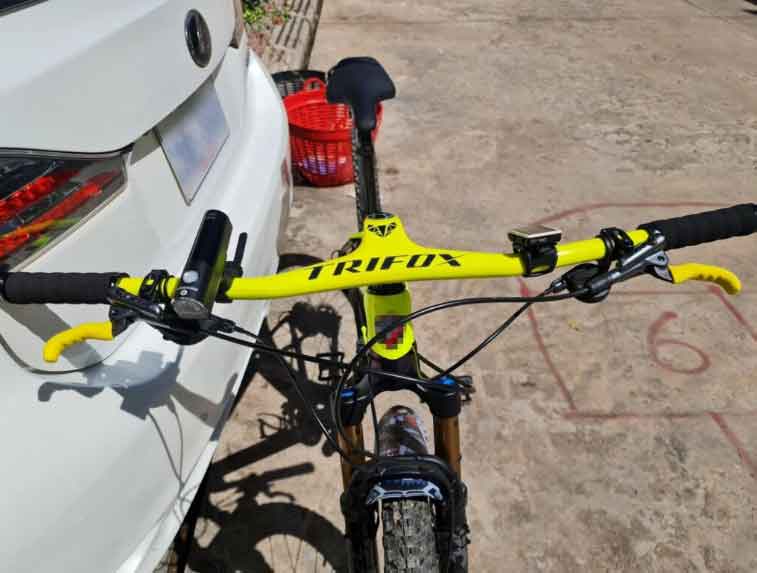
The width, angle, and elevation of the handlebar directly affect the handling and comfort of the bicycle. So, is the width and angle of the handlebar really important? Below, we will talk about how to correctly choose the width and angle of the handlebar through the three most common types of mountain bikes. XC handlebar width and angle selection As the only mountain bike event in the Olympics, the current xc track is becoming more and more complex, the wheel diameter is getting bigger and bigger, and the types of handlebars are also increasing. Compared with the other two models, the xc climbs more slopes. Now, most xc riders choose a longer negative angle stem. The handlebar width is generally 640~740mm. The handlebar is generally 640~740mm in width, in order to exert force on the uphill and press the front wheel Bring good support to the cradle. The angle of the handlebars is also relatively forward, but due to the increasingly rugged and complex terrain and the use of 29-inch wheel diameters, many professional riders choose handles with a 5-10 degree lift, which can ensure the efficiency of uphill. At the same time, it brings a certain improvement to the attitude stability of the downhill bike control and flying over the platform. Personally, I feel that the xc handlebars can now be selected from 680 to 700mm, and the angle can remain unchanged. If you are interested, you can try it. Enduro handlebar width and angle selection The adjustment of the front and rear shock absorbers directly affects your position on the bicycle, so before choosing the handlebar height, make sure that the front and rear shock absorbers have been adjusted. Unlike roads, mountain bikes are more flexible, so there is no “recommended” absolute handlebar height. Handlebar lift is subjective and depends on your own personal preferences, height, choice of bike, and terrain. For enduro models, the handlebar lift generally tends to be between 20 degrees and 35 degrees. Because this is not only conducive to the uphill force but also can bring stable control to the downhill. The 780mm handlebar width is more suitable for the shoulder width of our Asians. Now, most of the original handlebars are 800mm, and many people buy them and install them directly. This will lose your strength and control of the bike in climbing and downhill, especially cycling on a narrow forest road. It is also a big test for your control. As the current handlebars are somewhat drifting (the angle at which the handlebars deviate backward, about 5-15 degrees), the installation angle can be selected as far back as possible in the middle (there are digital scales on the handlebars, and scales of different brands) Means different). Because of the offset of those few degrees, the feeling and confidence of lifting the front of the bike and controlling the bike downhill will be greatly increased, but the installation angle should not be too backward so that it will be very strange when going uphill and it will not be sent. force. After confirming the width, try both the front and back angles so that you can find the angle that suits you. DH handlebar width and angle selection In Red Bull Rampage (Red Bull Rampage), the various gods operate so smoothly, the choice of handlebars is also crucial. DH handlebars are mainly divided into two types, racing type, and action type. For racing type, you can choose a handlebar with a lower lift (20-30 degrees). The same is true. The width of 780mm is more suitable for us Asians (if Your shoulder width is enough, you can use 800mm). The handlebars of downhill bikes are mainly for bike control, and the angle can be selected to be centered and rearward, and the center of gravity is relatively backward when going downhill to improve stability. If you are an action-type DH player, you can choose to raise the handlebars higher (about 30-40 degrees), and the width can also be relatively reduced, about 740mm-780mm, which is convenient for making “perfect” movements when flying bags.
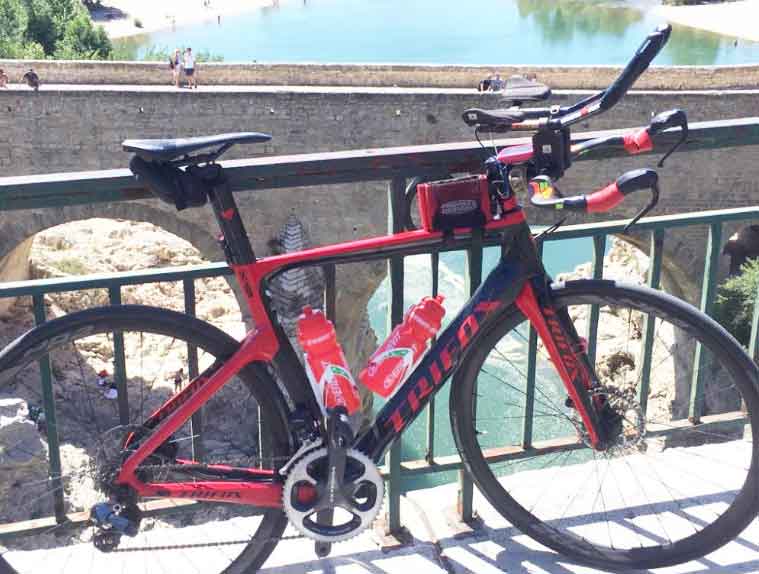
Many cyclists are very entangled with a question at the beginning, that is, whether to install a bicycle foot support or not. In the later practice, it proved that there is really no need to install, some said it was because of weight reduction, some said it was ugly, and some said it damaged the bike. In short, don't install it! For sports bikes, we don’t advocate the installation of bicycle foot supports, so what should we do when I need to park when we go out? Here are some bike enthusiasts who use the things at hand and the surrounding environment to help park their favorite bicycles. Let’s learn together! Share eight parking methods for your reference: 1. Put the handlebar against the wall Handlebars against the wall are something many cyclists will do, or they are against roadside railings, etc. It requires a little skill and a little adjustment. 2. Use the rear wheel against the wall Similarly, use the rear wheel is against the wall. It is also very good to just use the rear wheel to find a support point on the wall. 3. Use the bicycle saddle against the wall Of course, Use the cushions against the wall, the reason is the same. The advantage of placing the cushion against the wall is that you don’t worry about the wall bumping into other parts of the bicycle. Extend it, you can also lean against trees and lampposts. 4. Upside down It takes a little bit of effort. After all, not everyone likes to turn the bike upside-down, so it depends on personal preference. 5. Hook the railing Limited to the handlebars, the handlebars of bicycles have found a new purpose. Hooking on the railings may be more stable than leaning on them. 6. Support front and back together It means that as long as you lean against the wall, you can stabilize it. It is also the easiest and most practical way. 7. Fall to the ground (put the side with the rear derailleur up) Pay attention to the fact that the transmission is facing upwards. When parking, be careful not to let the rear transmission directly touch the supporting surface; this can reduce the damage to the transmission and affect the accuracy of shifting. 8. Two bicycles lean on each other This requires technology, and it’s very easy to rely on. If you don’t rely on it well, the bike falls in minutes. 9. Use the road teeth to put the foot on it This method is very cool and the most commonly used. The bicycle is standing on the side of the road, and you are standing next to the bicycle. Finally, I would like to remind you that when you park your bicycle, you must protect it. Don’t let your bike bump into it. If you drop a piece of paint or something, you will feel very distressed.
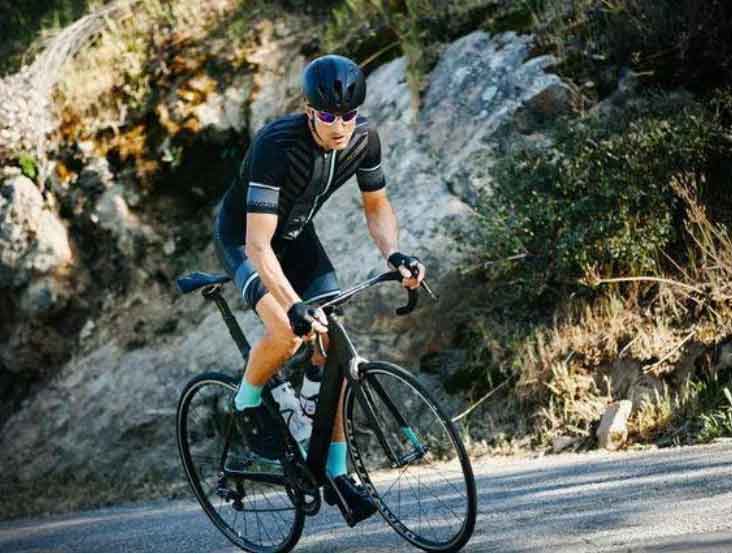
The way of breathing is different in different stages of cycling. Before cycling: Inhale through the nose and exhale through the mouth Before setting off, you must first adjust your breathing by inhaling and exhaling to make your body adapt to the rhythm of exercise in advance. Method analysis: first close your mouth and use your nose to inhale deeply and slowly until you can no longer inhale, and then open your mouth to slowly exhale the air. After exhaling, close your mouth and inhale deeply with your nose. Repeat the above operation 9 times in succession. After you are done, breathe naturally through your nose a few times and you can set off. Cycling on flat roads: abdominal breathing When you start cycling, your body’s oxygen consumption will increase, and abdominal breathing can inhale more air, thereby increasing oxygen intake. Method analysis: close your mouth and roll your tongue up against your upper jaw to prevent excessive air from staying in your mouth. Then use your nose to inhale deeply. At this time, you can clearly feel that your abdomen is contracting. When you exhale, you should exhale as much as possible. At this time, your abdomen should be protruding outward.It doesn’t matter if you don’t get used to it at first, you will get used to it if you practice consciously. When climbing: fast inhale and fast exhale Compared to cycling on a flat road, climbing a hill requires more energy, so more oxygen is needed to power the muscles. At this time, although abdominal breathing requires a large amount of oxygen, such a relatively slow breathing rhythm cannot meet the demand. At this time, it is necessary to change the breathing mode. Method analysis: When you first start going uphill, you can use the same way of inhaling and exhaling before you set off; pay attention to inhale and exhale slowly. When you find that your breathing is getting more and more rapid, you should speed up your breathing rhythm-close your mouth, inhale quickly through your nose, and exhale quickly through your mouth.If your breathing becomes more and more rapid, you might as well stop the cart and adjust your breathing. Precautions. During the entire cycling process, whether you are cycling or getting off the cart, be sure not to breathe in with your mouth.On the one hand, although the amount of oxygen inhaled by mouth is relatively large, it is easy to inhale insects and other dirt, and inhalation of cold air often causes coughing and even diarrhea, which greatly affects the cycling experience. On the other hand, the nose itself has the ability to filter air, and at the same time, after the air passes through the nasal cavity, it will become warm and humid. In contrast, inhaling through the nose is more beneficial to the body.
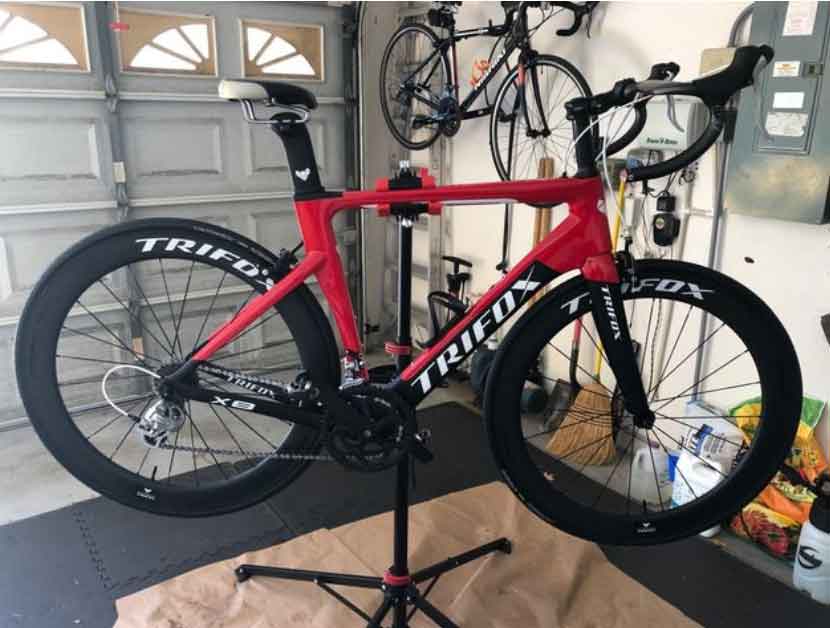
Carbon fiber is an incredible material that has completely changed the design and performance of bicycle frames. It is lightweight, corrosion-resistant, can be molded into various required shapes and is very strong in use. The claim that carbon fiber frames and related parts are generally brittle and unreliable is not true, but just alarmist. It is strong enough to be used in F1 and the aerospace industry, and there is no doubt that it is naturally used in the bicycle field. If it is produced by a credible manufacturer and used correctly, there is no reason why the carbon frame will not give you enough mileage to ride happily, and now many manufacturers provide a lifetime warranty for the frame. No matter what frame material you choose, whether it is a carbon frame, a steel frame, aluminum alloy, or titanium alloy, quality is the key, and good quality is always more durable. Riding a carbon frame bike, you don’t need to deliberately change some cycling methods, but you can pay attention to the details of the daily maintenance and use of some carbon fiber bikes. Buy a torque wrench Despite the incredible force performance in the design direction, squeezing can easily damage the carbon fiber, such as over-tightened bolts and clamps, handlebars, and seat posts are the most common causes of damage to the carbon fiber frame. All parts of a carbon fiber bicycle will be marked with a recommended torque value in Newton meters, which can be found on the relevant parts, manuals, or on the manufacturer’s official website. If you have a carbon fiber bike, a torque wrench is necessary, it can ensure that you will not use more than the recommended torque to tighten the components. If you have previously owned a bicycle with a metal frame, you may be surprised that the force required to assemble and adjust a carbon fiber bicycle is so small. Use carbon assembly paste The relatively small torque required for the carbon frame and its components also has the drawback that it is easy to slip off. This especially affects the Seatpost. Don’t risk trying to tighten the Seatpost with extra, more force, you should use carbon assembly paste. This is a gel containing fine particles, similar to a thin film, which increases friction between the contact surfaces to prevent slippage. Assembling paste and torque wrench are necessary for carbon fiber bicycle owners. Be careful Damage to the carbon frame caused by accidents or collisions is usually difficult to predict and avoid in advance, but some collision events that damage the carbon fiber can be easily avoided. A common situation is when the handlebar is rotated and hits the upper tube of the frame. This often happens when the bicycle is inadvertently lifted. So be careful not to let this happen when picking up the bike. In addition, try to avoid stacking bicycles on other bicycles, and do not use the seat part to lean on poles or pillars, so that the bicycle will easily slip and cause a collision with the frame. Leaning the bike on a surface such as a wall is much safer. Of course, you don’t need to be too nervous to wrap your bike with cotton wool. You just need to be more careful and take reasonable precautions to avoid unnecessary collisions. Keep it clean Regular cleaning can give you a chance to inspect the bike carefully to see if there are obvious signs of damage. Regardless of the material of the frame, this should be your routine during cycling. Of course, rough cleaning also needs to be avoided, which will damage the epoxy resin wrapped around the carbon fiber. If you have any questions about how to clean your bike scientifically, you can consult the manufacturer for advice. Any degreaser or cleaning products for bicycles and old-fashioned mild soapy water should be used appropriately and reasonably. Avoid squeezing As mentioned above, try not to over-tighten the parts. Carbon fiber is easily damaged by extrusion. Therefore, you need to be especially careful when using a repair rack or an onboard bicycle rack to clamp the frame tube. The bicycle should be fixed with minimal pressure, or a protective layer can be wrapped on the frame. Of course, you can also consider changing to a bicycle transportation method. If you want to take your bicycle on the plane, we strongly recommend using a hard special box for packing. Don’t reverse For metal frames and parts, for example, during the installation process of handlebars and Seatposts, it is normal and acceptable to give a certain amount of rotation or pull for fine adjustment after being fixed. However, this step will cause damage to the carbon fiber bicycle and must be strongly avoided. The correct way is to use the recommended torque value and use the assembly paste. If the position and angle of the parts need to be adjusted, the parts should be completely loosened in advance. Measure twice, cut once If you need to cut carbon fiber parts, such as handlebars and the entire Seatpost, remember to measure carefully and accurately, and wrap it with tape as a mark for the cutting part. Cutting requires a special carbon saw blade, which can prevent fiber tearing and abrasion. . Never use a pen or sharp tool to mark the position on the seat post that needs to be cut, because even a small scratch may damage the carbon fiber. Instead, you can use insulating tape to paste and wrap it to mark the cut position. Avoid chain jamming Many people have encountered the situation of chain drop, especially when shifting gears incorrectly. In the worst case, the chain gets stuck between the smallest chainring and the chainstay after the chain is dropped, and it gets stuck instantly. For carbon fiber bikes, this is a great “pain”. When this happens, stop pedaling immediately and avoid further exertion. After returning home, thoroughly clean and relubricate your drive system. Check your chain, including wear, elasticity, etc. It is best to replace it if necessary. Replace the brake pads If you use alloy training wheels and carbon fiber racing wheels alternately, replacing your brake pads accordingly is the most basic. Although there are dual-purpose brake pads, the remaining metal fragments on the surface of the brake pads can easily scratch and destroy the carbon fiber rim. If the worst happens In the event of a crash or accident, unlike the metal frame, where the depression or bending damage can be clearly seen on the exterior, the carbon fiber may appear to be undamaged on the exterior, but it has actually been damaged. If you have such a crash and worry about your frame, be sure to ask a professional technician to do a professional inspection. Even serious damage can be repaired well. Even if the aesthetics are not perfect, they can at least guarantee safety and function.

















